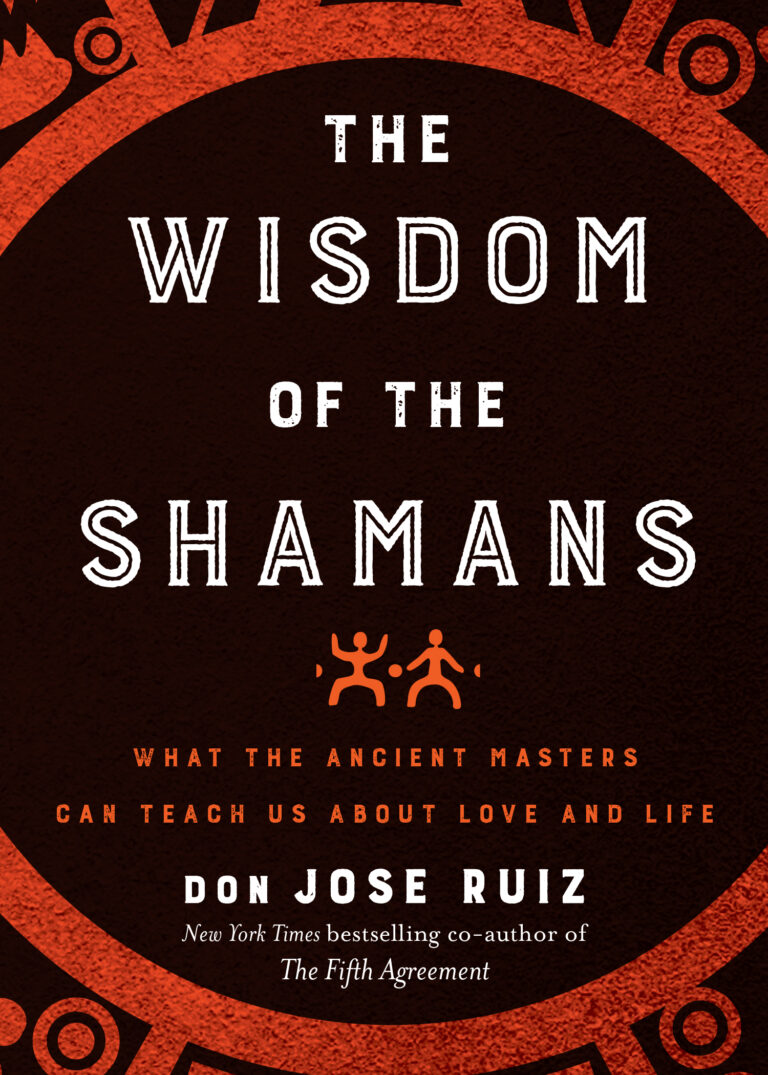
by don Jose Ruiz
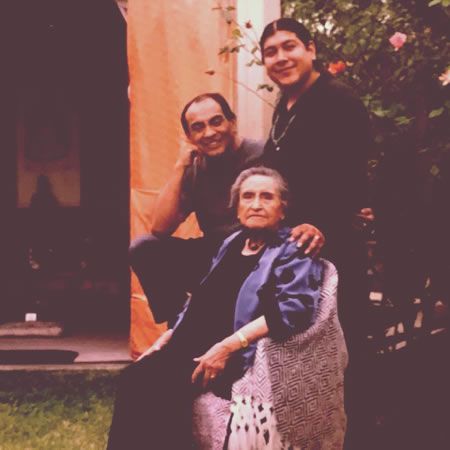
Linguistically, the word shaman would have meant nothing to the vast majority of native cultures outside those groups in northeast Asia where the term likely originated. In my own tradition, that of the Toltec people of what is now Mexico, the shamans were called naguals, meaning “the awakened ones,” in our native Nahuatl language. It’s interesting to point out that the word nagual has an additional meaning: it is also the word for the life force energy, the divinity that we all have inside of us.
Taken together, we can see that the Toltecs believe that everyone is a nagual, but the shamans are the ones whose eyes are open to this realization.
For uniformity, and because any word in itself has no meaning without our agreement, I will use shaman to describe a person who is awakened to the realization that we are all this fundamental life force energy, as this is the most familiar term in the modern world.
On a global scale, shamanism refers to the spiritual tradition or religion of native cultures around the world. These spiritual traditions are said to have certain things in common: a respect for nature, a respect for all life, and a respect for their ancestors. While this is all true, this is only the barest of beginnings of what it means to practice shamanism.
The good news is that the modern world is beginning to catch up to what my family has known and passed down via oral tradition for more than a thousand years, namely that the shamans were both men and women and that their ideas were anything but primitive. In fact, the roles they played in their communities were a sophisticated combination of philosopher, spiritual leader, medical doctor, psychologist, and friend.
Seen in this context, certain questions begin to arise: What did these ancient masters know? How did they acquire and pass down this knowledge? And can this knowledge help us in the way we live our lives in the modern world?
It is my personal belief that the wisdom of the shamans is not something primitive or reserved only for men, but a complex and powerful series of teachings available to all of humankind. It is the wisdom of waking up, of finding your own personal freedom, of living in peace and harmony to the best of your ability, and of being of service to others and the planet.
Quite simply, it is the wisdom of love and life.
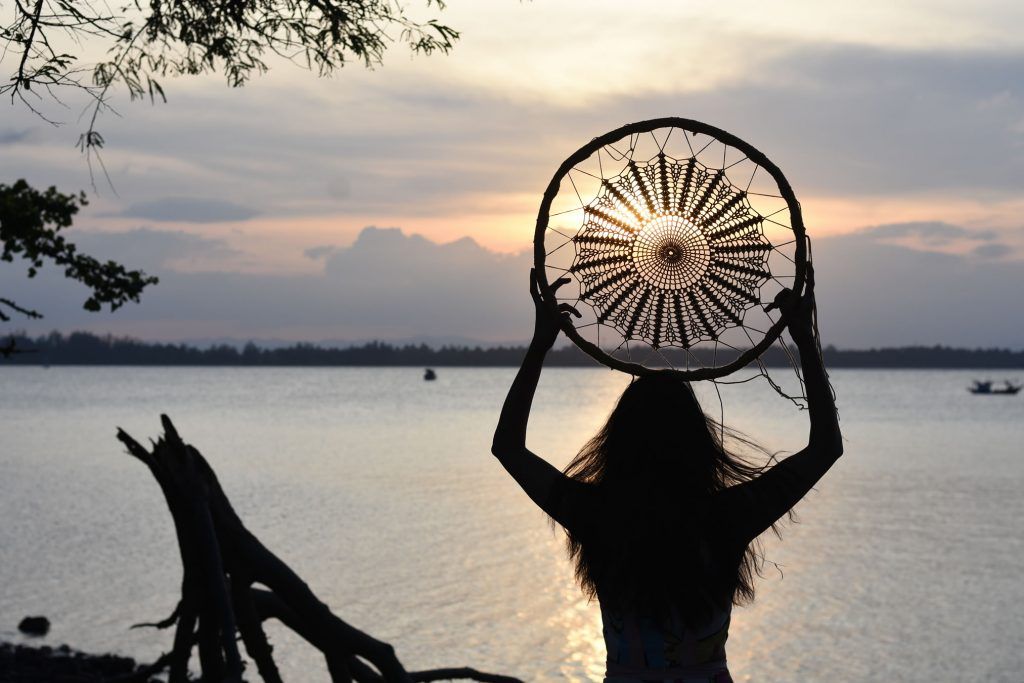
The path of the shaman is largely an individual journey. Rituals, books, tools, and even other shamans only serve as guides to help you find the wisdom that comes from deep inside of you. No two shamanic journeys are alike, as we each ultimately make our own unique path, create our own art, and express ourselves in our own beautiful way. That’s why I often say that you are both the student and the teacher on the shamanic journey, and life is expressing itself through you.
In my own tradition, that of the Toltec people of south central Mexico, we say that we are all artists. In fact, the word Toltec means “artist.” This is not confined to the traditional understanding of the word as painters, sculptors, etc., or just to members of my ancestral tribe; this designation extends to every human being on this beautiful planet. The simple truth is that every person is an artist, and the art that we create is the story of our life.
If the Toltec tradition is the way of the artist, then we can say that the shamanic path is really an invitation to you, the artist, to create your own masterpiece, to use everything in your life as a brush to paint your own picture of personal freedom.
One of the most important aspects of shamanism is that within every one of us is the light, the divinity, or as my ancestors would say, the nagual. Each one of us has our own truth inside ourselves.
The quest of the shaman is to find, live, and express it.
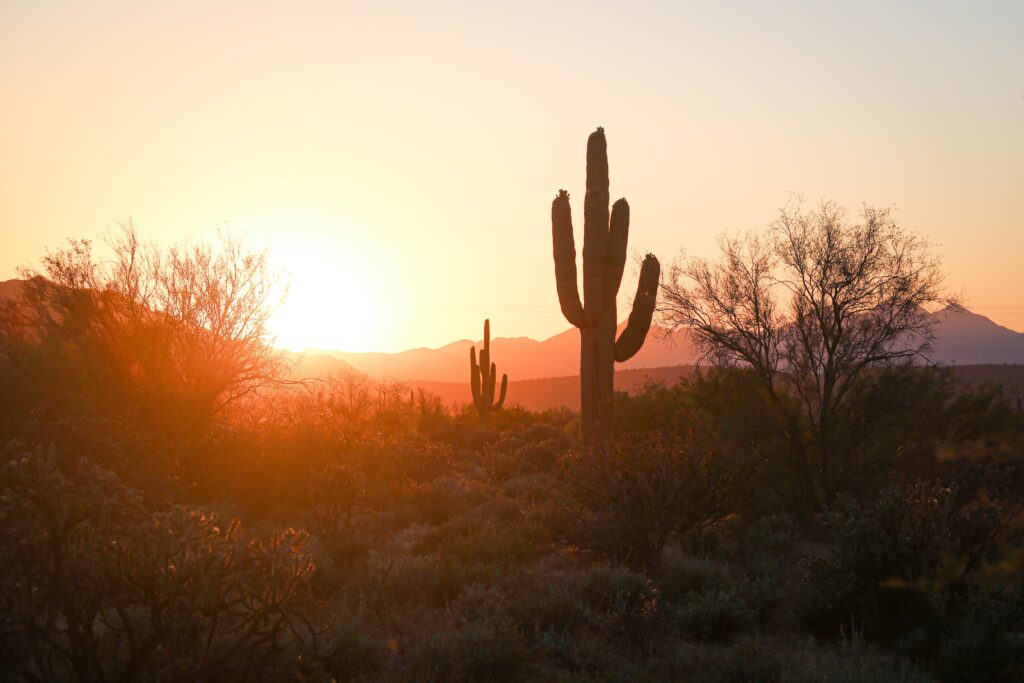
We also say in the Toltec tradition that everyone is dreaming all the time.
This is because you can only ever see life through your own filters—the filter of “Jose” in my case. Therefore, life as you perceive it is a reflection of your perceptions and beliefs. It is not real, but rather a dream. To some this may sound negative, but in fact it is positive because if your life is a dream, and you become aware of the fact that you are the dreamer, then you can consciously create the dream you want to see and live the life you want to live.
There are actually two dreams that make up what we call life. First, you have the personal dream, which is your own perspective. It is how you see the world around you and how you make sense of it in your mind through the stories you tell yourself about what you perceive. Things such as “My name is Jose,” “My parents are Miguel and Maria,” “I was born in 1977,” “I live in this place, that is my car, my house, my spouse, etc.”—this is your own personal dream.
There is also the Dream of the Planet, or the collective dream we are all having. The Dream of the Planet is the sum total of all our personal dreams, and together they make up the world in which we live. Together we have created the oceans, the mountains, the flowers, the wars, the technology, the concepts of good and bad—all of it. The Dream of the Planet is the combination of all our personal dreams and forms the basis for how we interact and communicate with one another.
The Toltec understood that in both cases, personally and collectively, what we are perceiving as life is not real. Our perception of life is really just a complex set of overlapping stories, held together by our concept of time. In my family’s traditions, the shamans, who were called naguals in our native language, were “the ones who are awake,” because they had woken up to that fact that we are all dreaming, that we are all storytellers, and that while the truth of who and what we really are is ultimately indescribable, the best way to say it is that we are life itself.
Anyone who has the desire to awaken from the dream and find his or her own personal freedom is a shaman. Of course, this is easier said than done, because the dream has several mechanisms it uses to keep us asleep, many of which we will look at in greater detail throughout the course of this book.
To be clear, waking up involves more than just knowing intellectually that everything around you is a dream.
It is easy to be told something and believe it with your mind, but much more difficult to put it into practice. The point of the shamanic path is to have the experience of awakening, which involves something beyond the thinking mind or intellectual knowledge.
For instance, when I tell you that you are dreaming all the time, you may trust me and believe it, but it isn’t until you integrate that knowledge and experience it for yourself that your world begins to change.
Prior to that it is only a belief. Once this belief becomes your experience, then it becomes a part of your personal reality.
So at first, the shaman tells you that you are asleep, that you are dreaming, and offers you a path to awaken to who you really are.
The shaman wants you to come to know yourself beyond the little story you have created, the little you.
The shaman can do this because he or she has come to know him- or herself as an individual expression of this divine life force and that this divinity, this life force, is in all things.
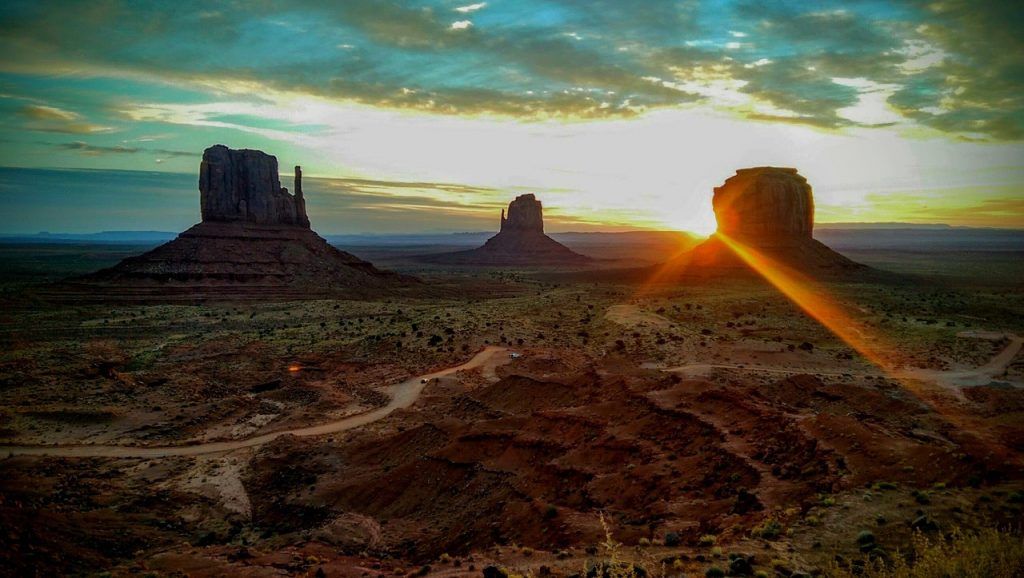
That's why shamanism is so connected to the natural world that surrounds us.
The shaman knows that all life is connected, all life is one. And this doesn’t just refer to the bodies we can see, but the space between everything as well. We are connected through the air we breathe, through the ground underneath our feet, the water we share that makes up so much of our bodies, and everything else that constitutes this planet and beyond. The connection is so obvious to the shaman, but the illusion of the mind and its constant dreaming prevents many people from seeing this truth.

As a simple example, think of an oak tree. This tree is the culmination of so many things—earth, sun, water, air, an acorn blown by the wind or carried by a bird—all of which have worked together to manifest this beautiful creation of art that we call a tree. If you were to take away any one of any of these things, this tree would not exist. The same can be said for you, for all of us, everything. We are a creation of all that has gone before us. Yet the mind clings to the illusion of separateness. But it is only that: an illusion, and the shaman is the one who sees through the illusion to the interconnectivity between all things and beings.
Many of us are lost in the dream for many years before the seed of awakening begins to manifest in us, and when it finally does, it is more akin to a process of unlearning rather than learning. In other words, you have been taught so much, starting when you were very young. You were told your name, who your parents were, where you came from, what you liked and didn’t like, and you agreed with it. In the Toltec tradition, we call this process domestication. Although some forms of domestication can be negative, it’s important to remember that domestication itself is not necessarily negative. It is a normal and necessary process; it is the way we create the Dream of the Planet.
For example, when you were young, your parents likely domesticated you to be respectful and kind to others, to share, and to develop friendships. In this way, they were giving you the tools you need to interact with the Dream of the Planet. The point here is that not all domestication is bad, even though the word itself often carries with it a negative connotation. Other forms of domestication are obviously negative: racism, sexism, and classism are easy examples, and then there are the subtler forms, such as when we adopt ideas like “I must succeed in life to receive love” or “I must have a perfect body in order to receive love.”
The process of awakening is often referred to as unlearning, because you begin to see how you were domesticated in the Dream of the Planet and you can consciously choose which ideas and beliefs you want to keep and which you want to let go. When you begin unraveling your domestications, you see that you were fed all of these ideas about yourself and you used these ideas to build the story of who you are. As any architect will tell you, a structure built on faulty foundations will ultimately collapse, and that is what happens to every story.
Perhaps you have already experienced the collapse of your story, and that is why you picked up this book. The truth is that any story of your life is just that, a story, and its collapse is a beautiful thing, because when it collapses you find out who you really are; you discover that you are really life itself.
This process of unlearning is our personal journey and unique to each individual. Although there may be similarities, no two people wake up in the exact same way. This is a major tenet in shamanism: everyone’s path will be different. Certainly we will receive help and guidance from others, but because we are all unique, our awakening will be unique as well. That is our own art. While some of the rituals and things we do will be the same as or inspired by what others have done, the shaman mimics no one, not even other shamans.
For instance, many people do not know this, but my father’s most famous book, The Four Agreements, is really the story of his own awakening. He overcame his inner negativity and the self-created problems in his personal dream by practicing those four agreements in every area of his life. He saw how he was giving his power away through not being impeccable with his word, taking things personally, making assumptions, and not doing his best. As a result, he formed these four agreements with himself so he could live in his true power. Practicing these four agreements was really a process of unlearning all the negativity he had adopted in his own personal dream.
When he awoke, he wanted to be of service to others, and that book is a manifestation of his art. In his case, this art was recognized around the world as truth and helped many people wake up (as of this writing The Four Agreements has sold over seven million copies worldwide). That is a wonderful thing, but my father will tell you he had nothing to do with that.
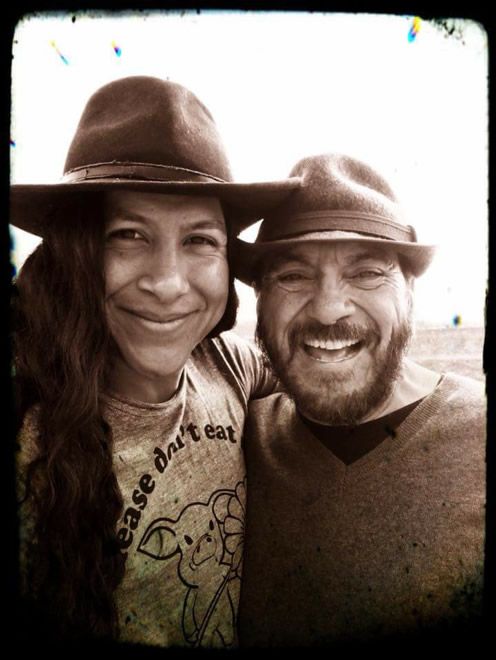
In other words, while he chose to share his work with millions in the form of a book, he knows his work is no more important than that of the shaman who wakes up and helps those in his own community. They are the same, and in fact one could not exist without the other. Like the oak tree, my father would not have awakened without inspiration and guidance from the myriad of shamans who have awakened before him.
As my father’s example illustrates, once the shaman awakens to who she really is, she sees that the best thing to do for herself and the world is to serve the great mother, or life itself. She sees the divinity in all beings, and she wants to help others awaken to this truth. She does so not out of any desire for personal gain (such as getting into heaven or gaining merit for rebirth), but because she has reached a state of peace, clarity, and awareness hitherto unknown to her. She has become a vessel of love, and when you fill yourself up with love, it begins to overflow. This overflow of love is what the shaman shares with others, because that is all that is left. That is why the shaman wants to help others wake up to the fact they are dreaming.
Even as you begin to awaken, I want to be clear that awakening to the dream doesn’t mean you will stop dreaming. Dreaming is simply what the mind does in the same way that the heart beats and the lungs draw breath. Awakening means that you realize you are dreaming. When you become aware of the fact that you are dreaming, you can then focus your energy on creating a beautiful dream rather than a nightmare.
A nightmare, in the terms of Toltec teachings, is whenever you live life unconscious of who and what you really are, and the result is that you suffer needlessly. When you sleepwalk through life, you get caught in the traps of negativity and emotional poison, and you fail to realize that in so many cases you are the cause of our own suffering.
The shamans in my family’s tradition saw this pattern as a collective human condition that can be described as an “addiction to suffering,” and this addiction to suffering is a habit of the mind.
Some of you reading this may recoil at the idea that we as a species are addicted to suffering, but take a moment to think about all the ways humans cause problems for ourselves and others. For instance, turn on the nearest television. If you watch any news channel for just a few minutes, you can see several ways we cause our own suffering. Next, turn the channel to any soap opera or drama. Have you ever wondered why we watch shows where the entire purpose is to create heartache and emotional pain inside us? Think about your own life for a moment. When things are going well for too long, do you look for a “problem” to stir things up?
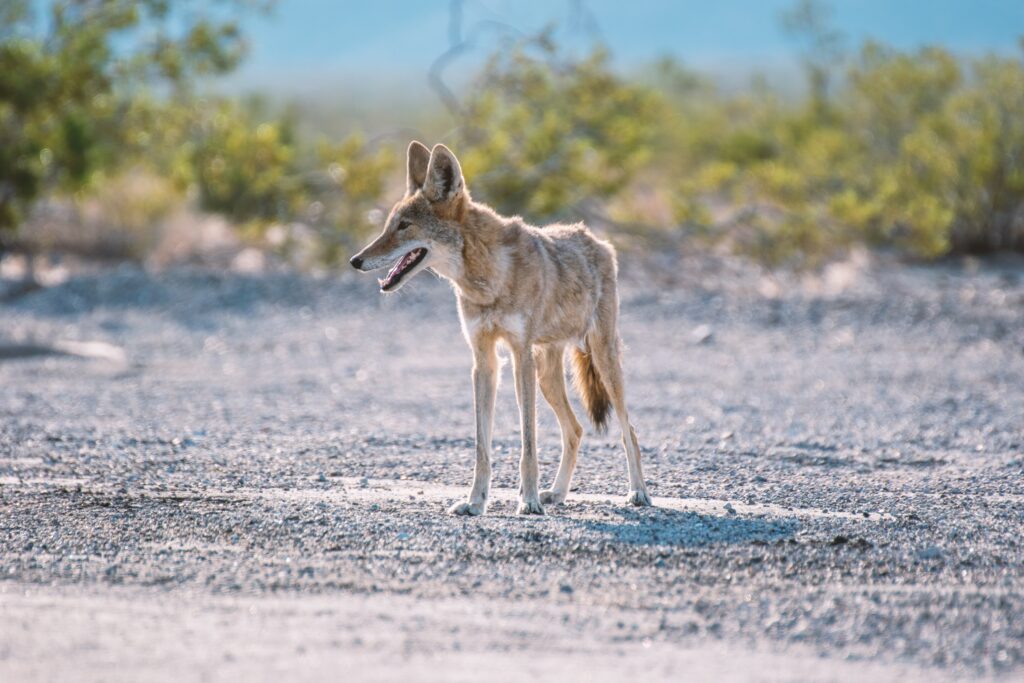
First, we do so because we are unconscious, because we don’t realize what we are doing, and that is the purpose of waking up. Second, we do so out of habit. Creating suffering is simply a habit of mind. Even as we begin to wake up, the old habits of suffering continue to ensnare us, and that’s why the shamans refer to it as an addiction. As with any addiction, the first step to ending it is to be aware of it and admit that it exists.
As we move into the teachings of my family’s tradition in the pages that follow, I invite you to see how the lessons from them might apply in your own life. Also, keep in mind what I have said about the human mind’s addiction to suffering because as you will see, this is a recurring theme throughout this book.
Lastly, please remember that you may find other meanings or truths that are more relevant to you and your own life. That is the beauty of shamanism: it encourages you to find your own truth, to follow your own heart, and to see that the answers you seek are already inside you.
Let this book be your guide to finding them.
All my love,
don Jose Ruiz

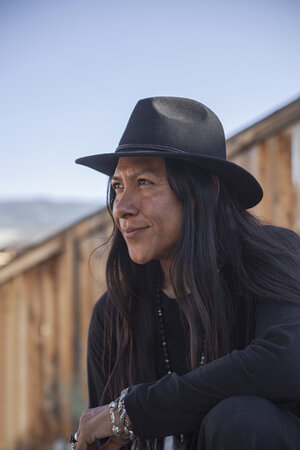
don Jose Ruiz was born in Mexico City and raised in Tijuana, Mexico. When he was 21, he came to live in the United States with his father, don Miguel Ruiz. He lectures and gives workshops around the world and dedicates his life to sharing the ancient Toltec wisdom by translating it into practical, everyday life concepts that promote transformation through truth, love, and common sense. He is the author of The Wisdom of the Shamans, The Medicine Bag, Shamanic Power Animals, and The Shaman's Path to Freedom, and the coauthor of The Fifth Agreement.